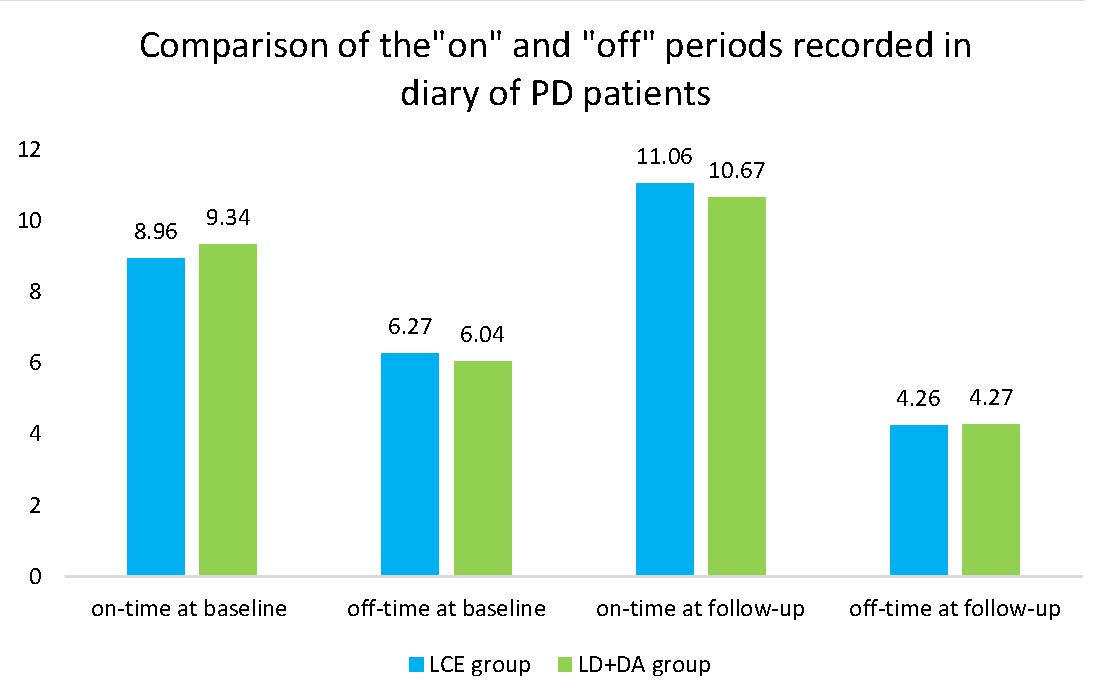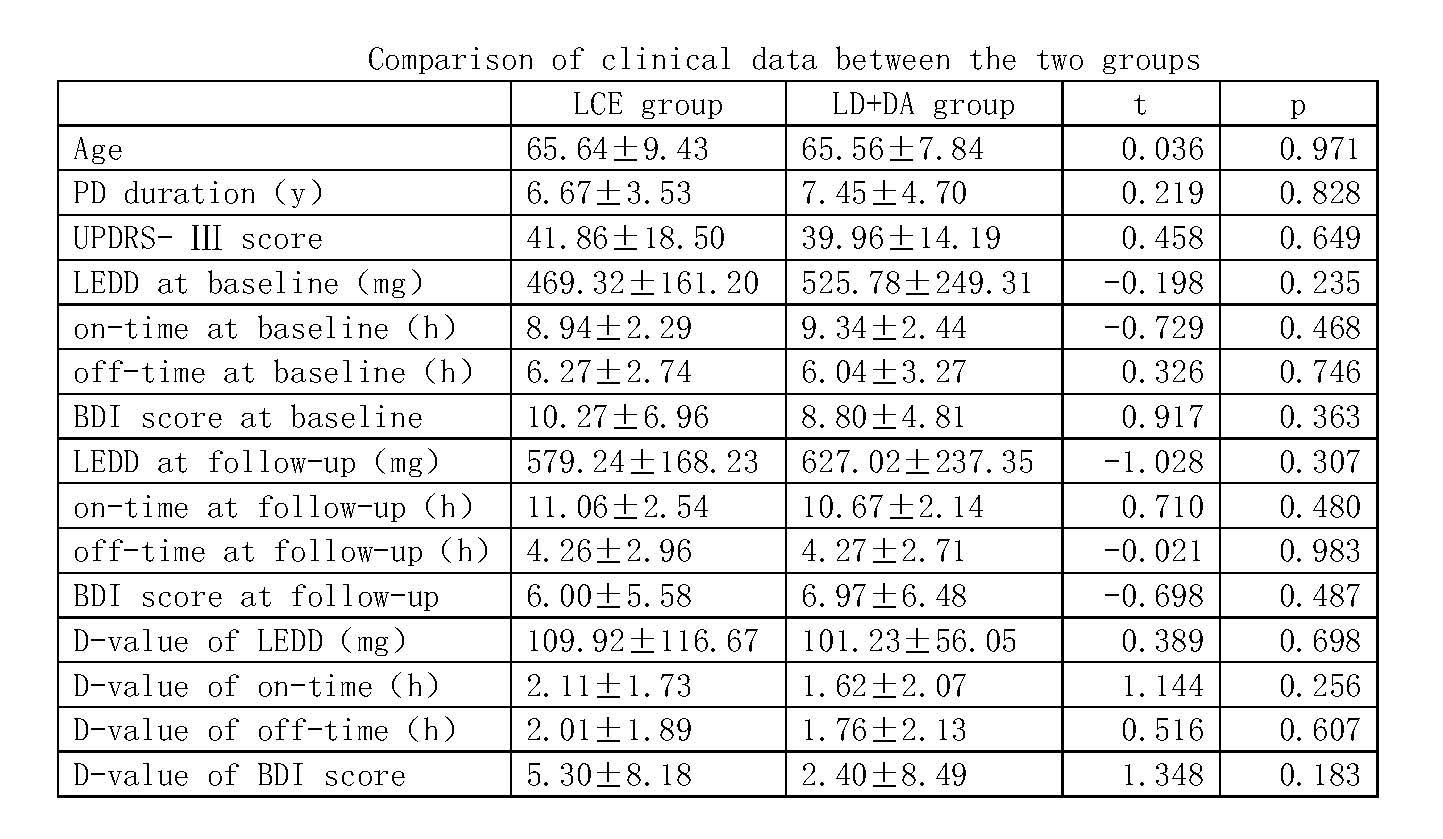Category: Parkinson’s Disease: Clinical Trials
Objective: This study aimed to investigate the efficacy and safety comparison between LCE and Pramexol in Chinese PD patients with the wearing-off phenomenon.
Background: Wearing off (WO) is often associated with long-term Levodopa therapy in patients with Parkinson’s Disease (PD). Entacapone and dopamine receptor agonists are recommended by International Parkinson and Movement Disorder Society (MDS) for PD patients with wearing-off. Stalevo is a compound dosage form of levodopa / carbidopa / entacapone (levodopa / carbidopa / entacapone, LCE).
Method: The study population was PD patients with wearing-off phenomena requiring ongoing treatment with stable levodopa (LD) at a dose of ≥ 300 mg / day and with a daily “off ” period for ≥ 1.5 hours. All patients had not taken entacapone or levodopa receptor agonists recently. During the screening period, patients were required to complete history taking, venous blood collection and assessment of relevant scales. After enrollment, they were randomly divided into an LD switch to LCE treatment group and an LD add-on pramexol group. The drug regimen adjustment period and drug stabilization period were 4 weeks each. At the end of the 8th week patients need to record the patient diary again for 3 days and complete the related examination and assessment for follow-up period.
Results: 76 patients ranged in age from 44 to 82 (mean 65.61±8.74), and the course of disease ranged from 1 to 22 years (mean 7.57±4.06). After randomization, 44 patients were assigned to the LCE group and 32 to the Pramexol group. There were no statistically significant differences in patients’ age, disease duration, and UPDRS (III) scores between the two groups. After the optimization of treatment regimen, the “on” period of patients in both groups was increased, with 2.11±1.73 hours in the LCE group and 1.62±2.07 hours in the pramexole group. At the same time, the “off” period of both groups was shortened, with 2.01±1.89 hours in the LCE group and 1.76±2.13 hours in the pramexole group.
Conclusion: For PD patients with wearing-off, the use of entacapone and dopamine receptor agonists can shorten the “off” period and prolong the “on” period of patients, which can improve the fluctuation of clinical symptoms of patients. The improvement degree of patients in the two groups is similar.
To cite this abstract in AMA style:
CY. Yu, WG. Liu, AP. Gong, LH. Shen, H. Huang, Y. Zhao, CF. Liu. Efficacy of levodopa/carbidopa/entacapone replacement of levodopa/dopa decarboxylase inhibitors in treatment of Chinese Parkinson’s disease patients with wearing-off: a multicenter, randomized controlled, open label study [abstract]. Mov Disord. 2023; 38 (suppl 1). https://www.mdsabstracts.org/abstract/efficacy-of-levodopa-carbidopa-entacapone-replacement-of-levodopa-dopa-decarboxylase-inhibitors-in-treatment-of-chinese-parkinsons-disease-patients-with-wearing-off-a-multicenter-randomized-contro/. Accessed October 17, 2025.« Back to 2023 International Congress
MDS Abstracts - https://www.mdsabstracts.org/abstract/efficacy-of-levodopa-carbidopa-entacapone-replacement-of-levodopa-dopa-decarboxylase-inhibitors-in-treatment-of-chinese-parkinsons-disease-patients-with-wearing-off-a-multicenter-randomized-contro/


